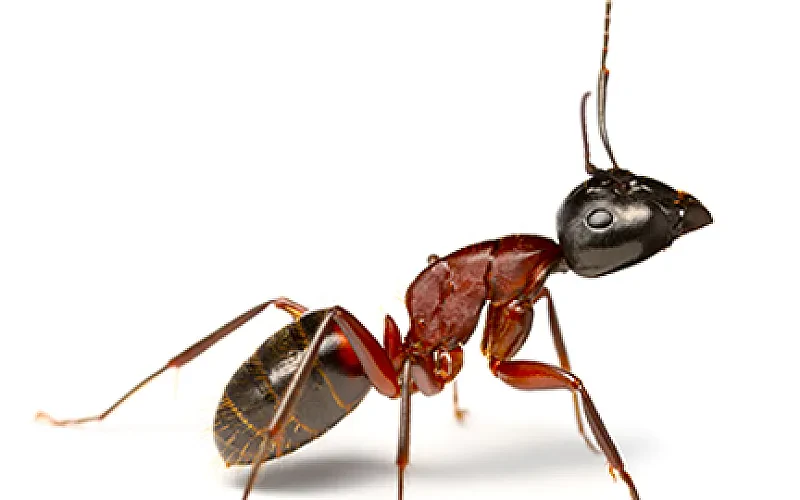
Carpenter Ant Biology and Control
Carpenter Ant Biology: Carpenter ants go through a complete metamorphosis, egg, larvea, pupae, adult There life cycle can take anywhere from three to ten months depending on temperature. Their optimum temperature is 85-90 degrees. Nests can be very difficult to find. Carpenter ant workers can be 1/4 to 1/2 inch in length. Queens can be 1 inch to 1 1/2 inch in length. Once a year a main colony will produce new Queens with wings that will fly out and start new satilite colonys, usually near by. A house can have several colonys infesting at one time.
Carpenter Ant Damage: Damage can be extensive as they carve galleries with their powerful mandibles, leaving course saw dust called frass below the area they are excavating. Places you might see frass is at the base of trees, on the roof, under windows or doors, in basements, below overhangs, decks, behind siding and the list goes on. They can be about anywhere in a house.
Carpenter Ant Control: Depending on the location of the nest(s), the use of non-repellant insecticides, baits and dust could be used to treat trails, cracks and crevices and the ground where they feed at the interior and exterior locations.





Comments